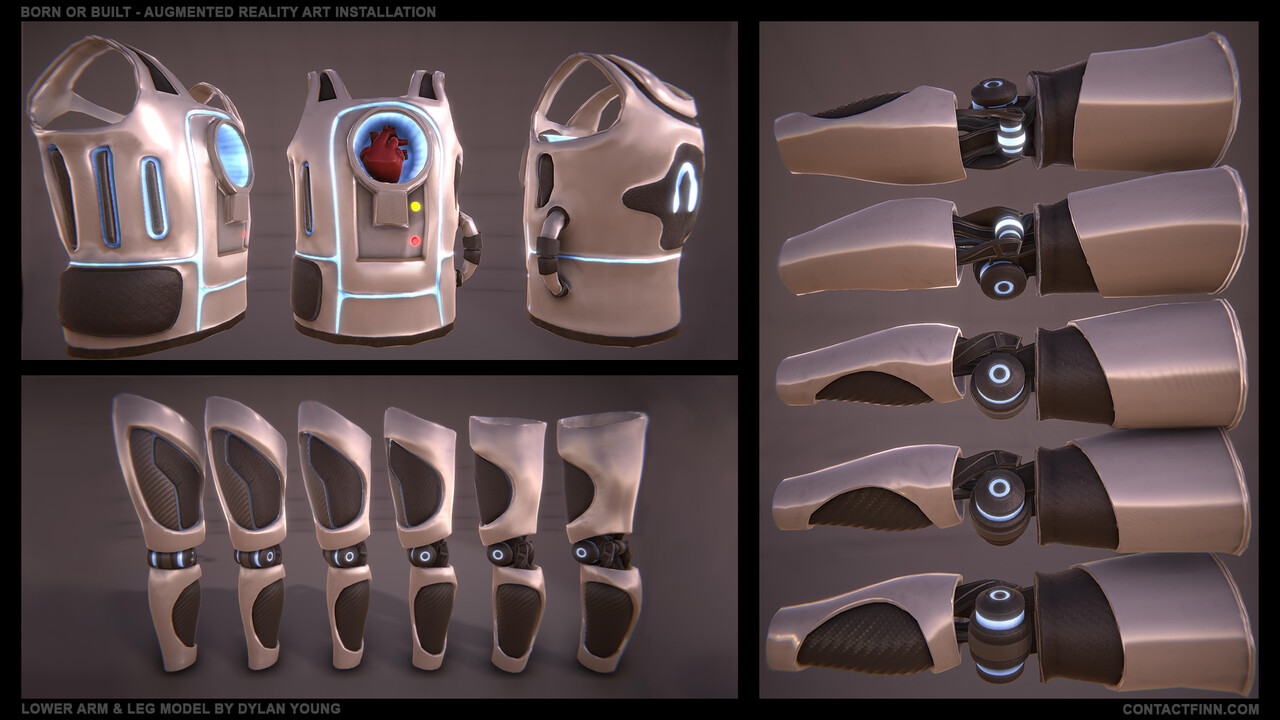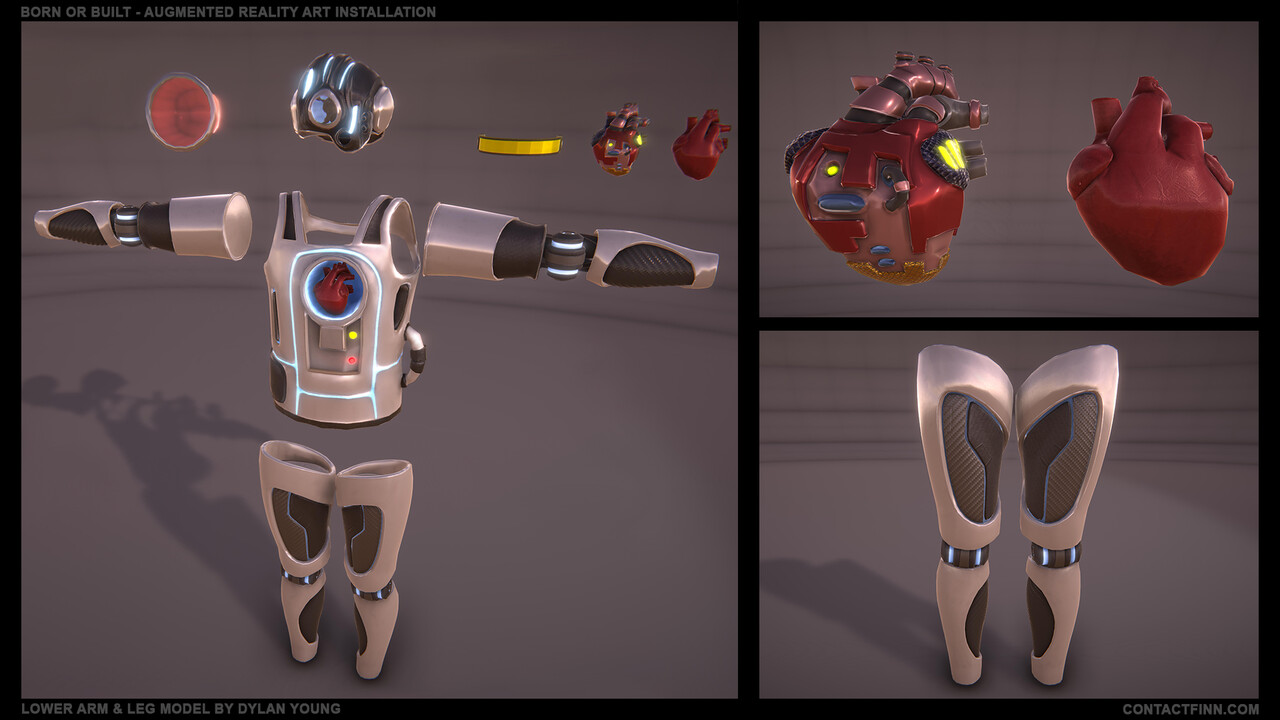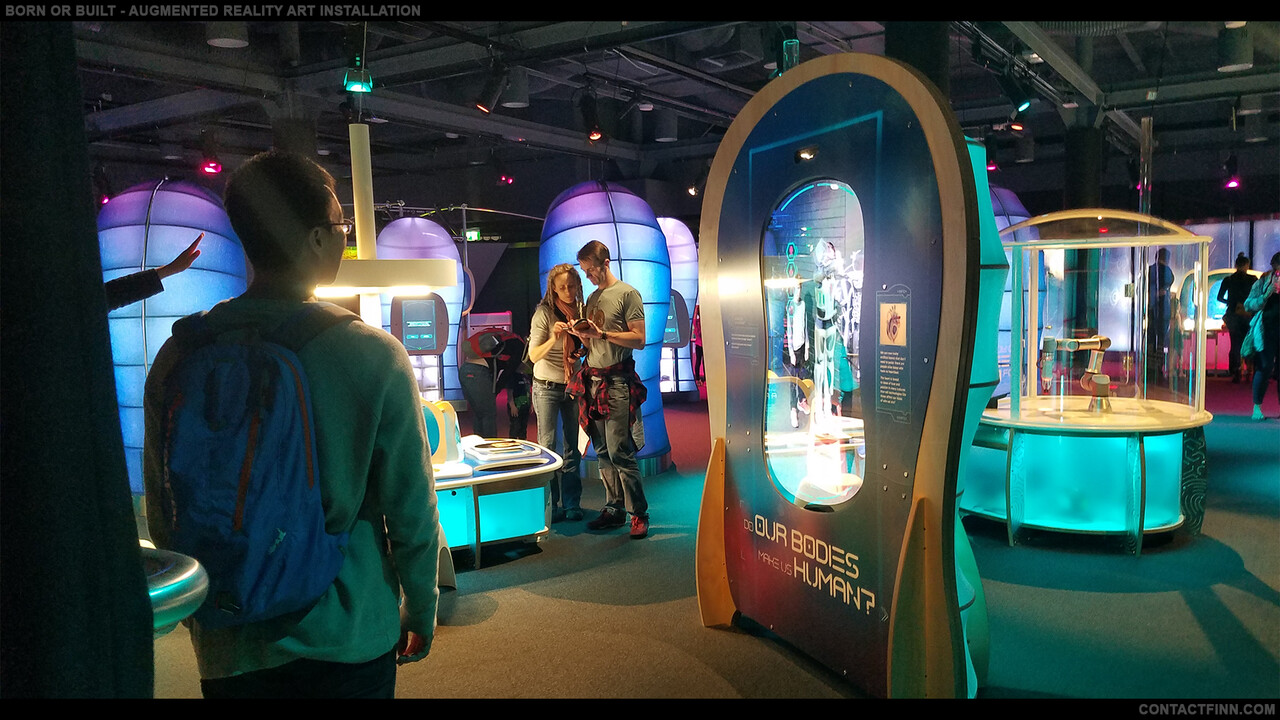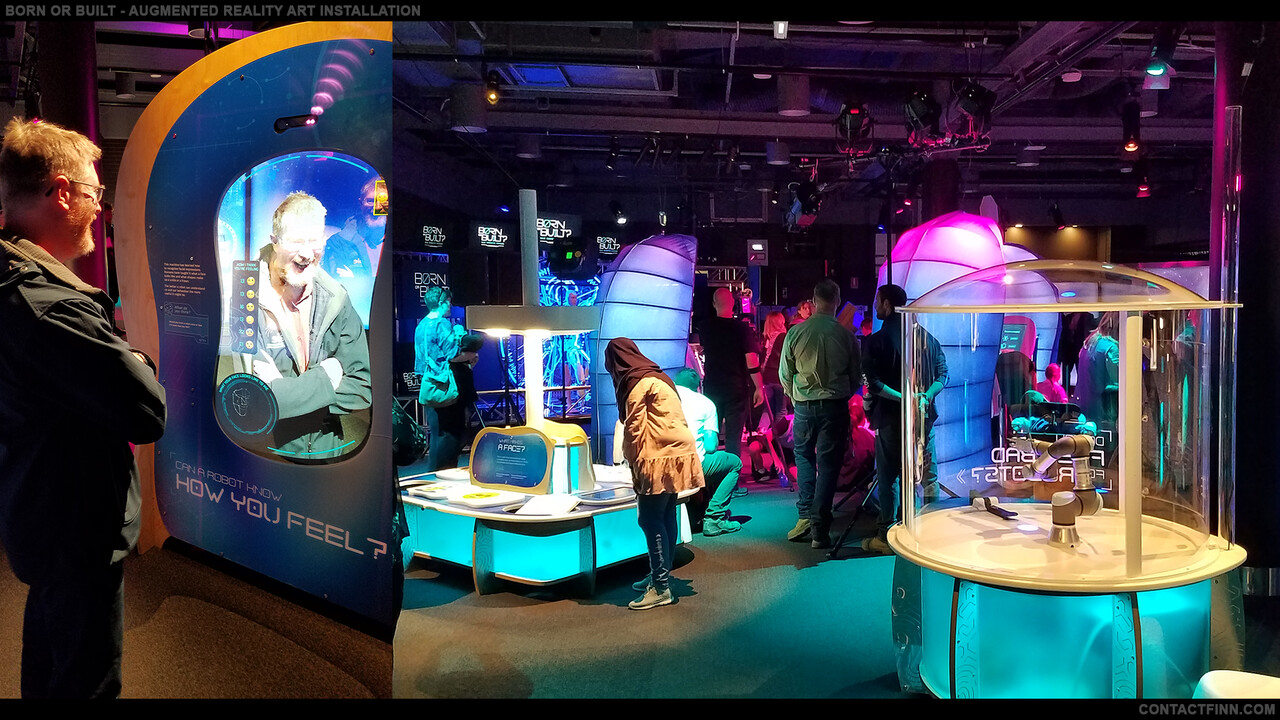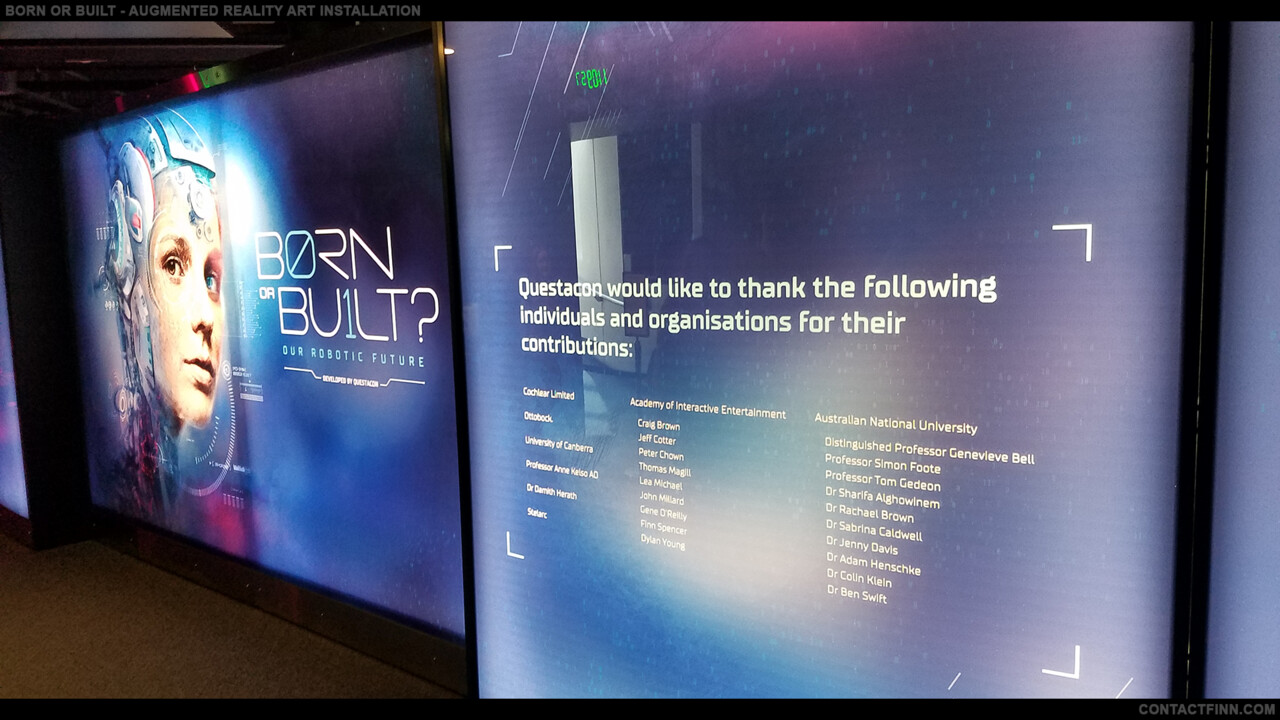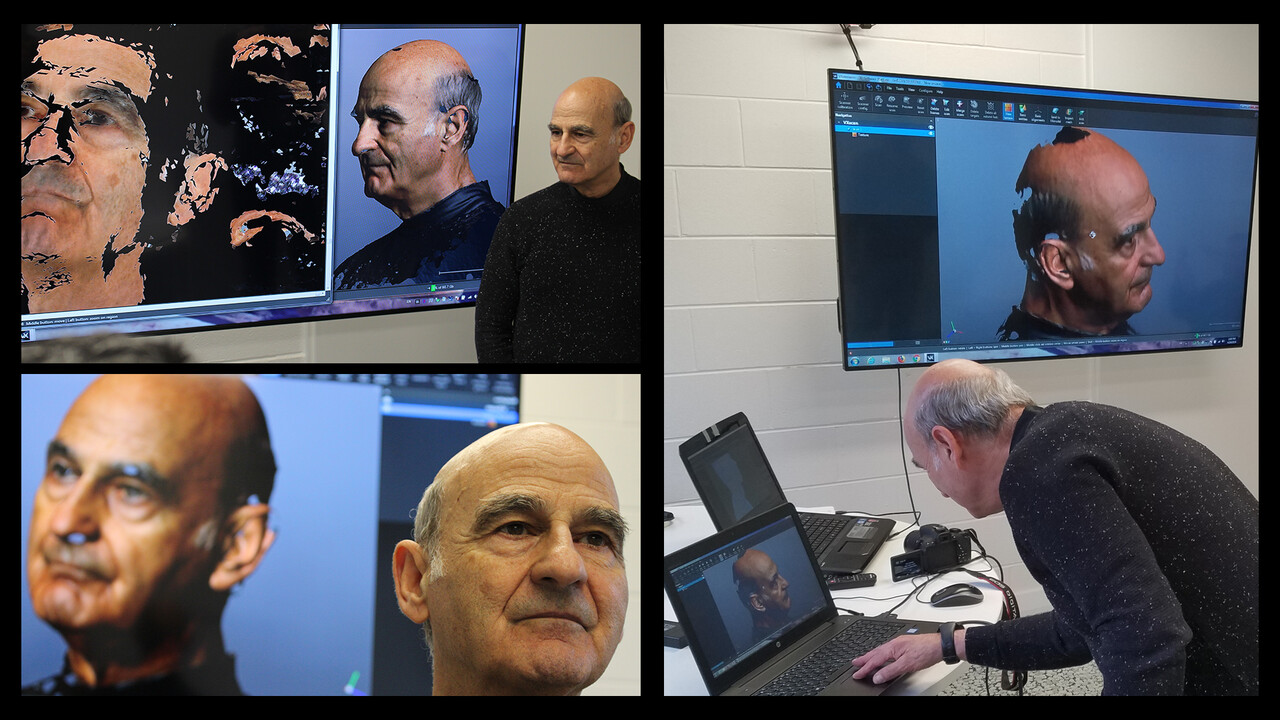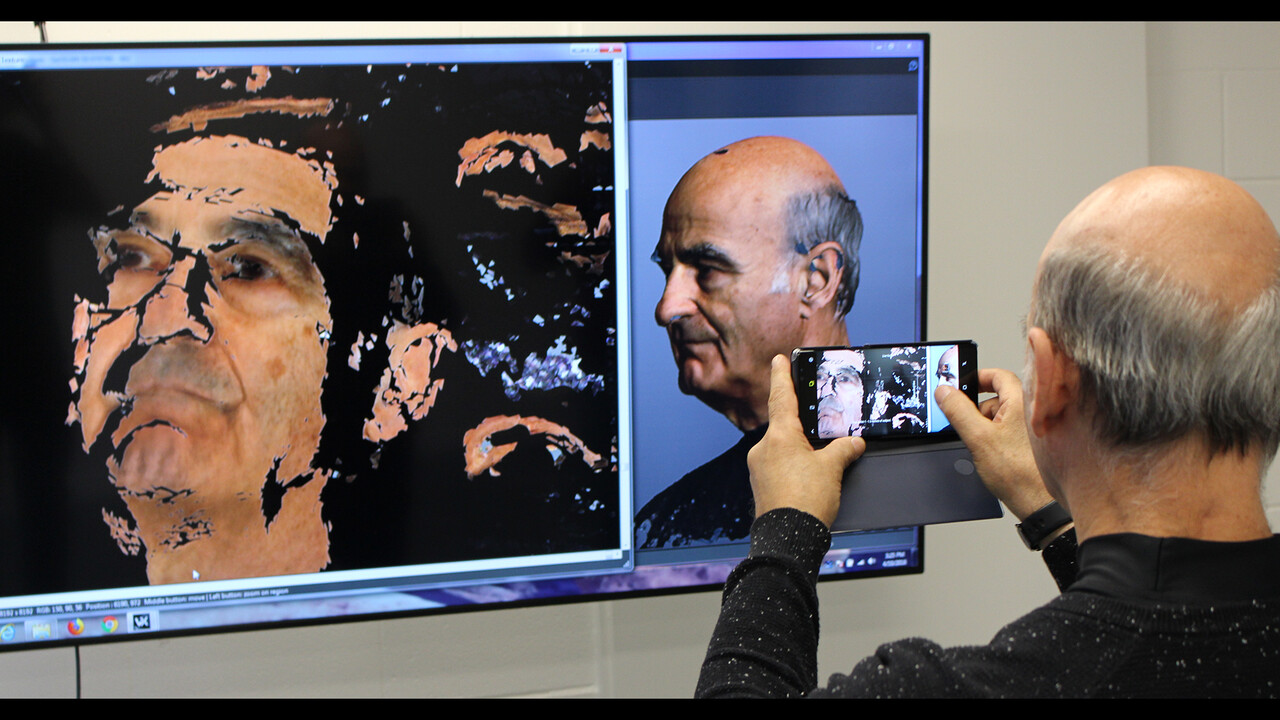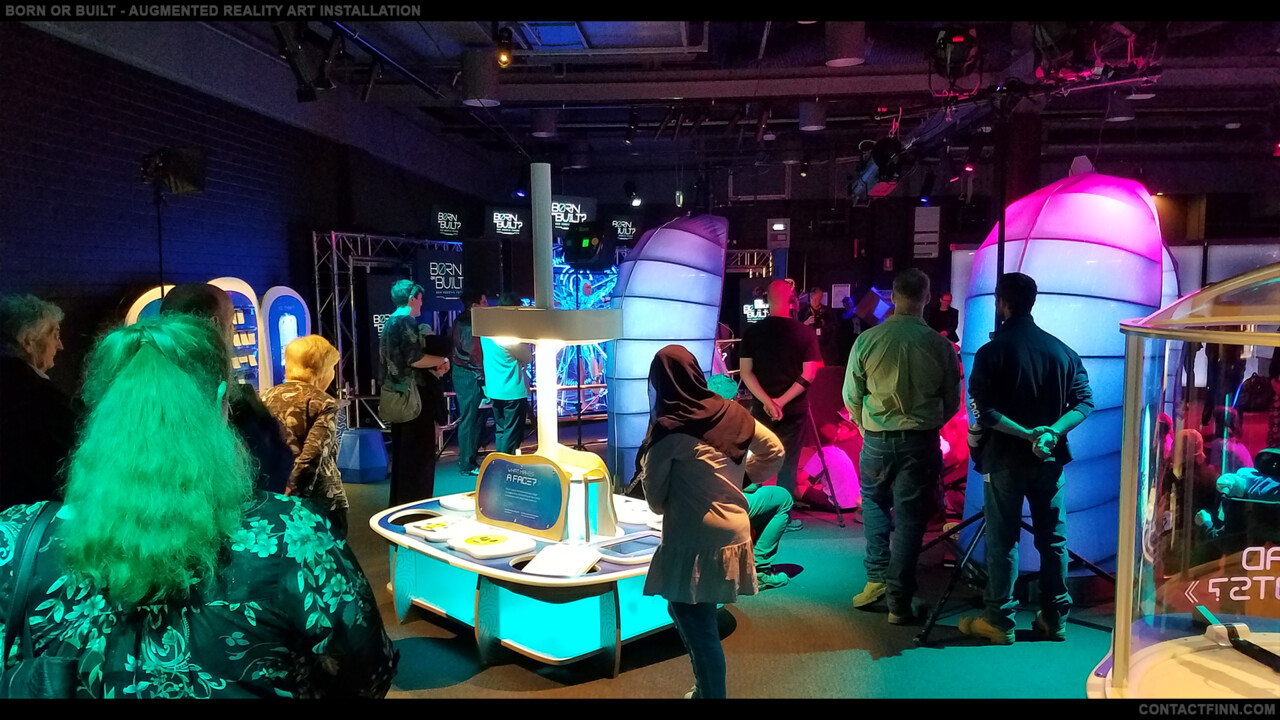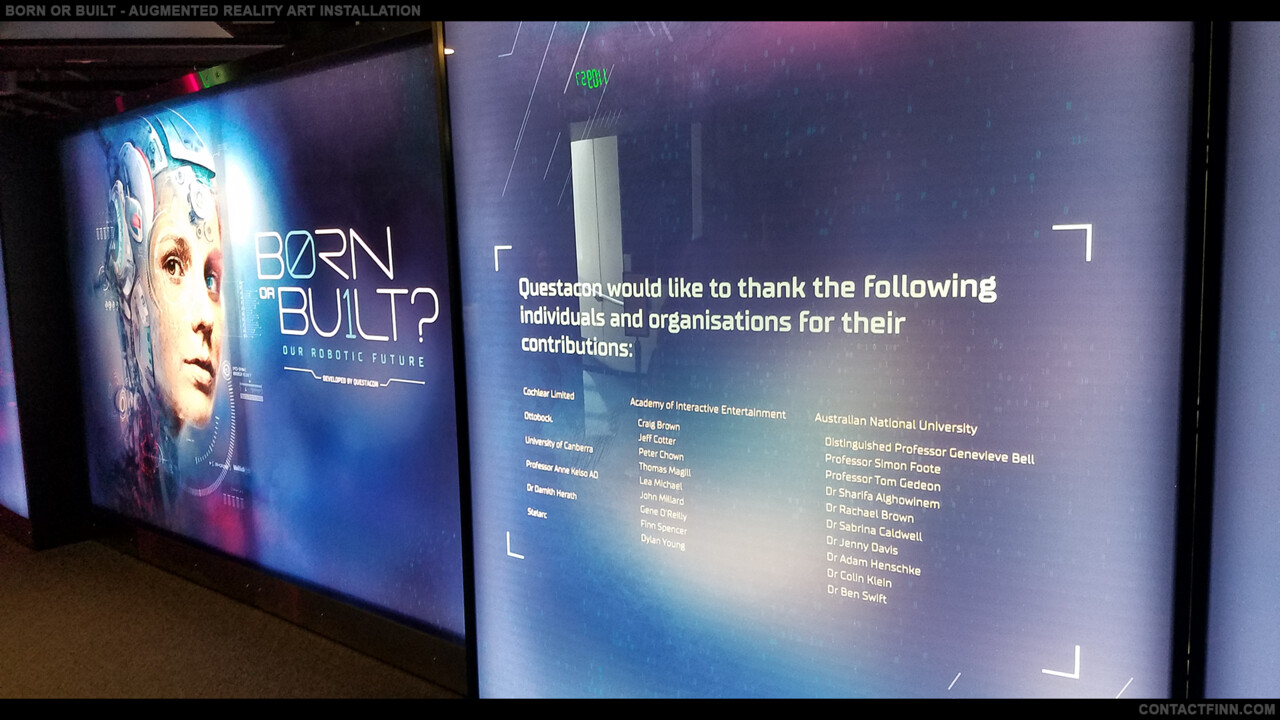Hello Everyone,
This is blog post is Part 2 of 2, if you would like to see Part 1 click here.
Back in 2018, I had the opportunity to work with Questacon through AIE on an exhibition called Born or Built. Questacon is Australias national Science and technology centre with more than 200 Interactive exhibits.
"The Born or Built exhibition is all about what is it meant to be human. It examines the similarities and differences between humans and machines, explores our overlapping shared future, and questions the choices we will make to get there."
You can check out a visual summary of the exhibition in the video below:
So more or less it is an exhibition for kids exploring ethics regarding AI and machines, with a whole bunch of interactive displays, and I was brought in to finish a project that was already in development.
The installation was an interactive LCD display using augmented reality, which allows whoever is interacting with the display/webcam feed to switch out different body parts with Human or robotic features. Works very similar to how Snapchat filters work, with the 3d Mesh or shapes being tracked ontop of a live video feed. You can check out more about the technology from the company's website Magic Mirror. The Idea is as you replace body parts, you will be prompted with the question "Are you still human? Yes? or No?".
Here is a short video from Magic Mirror showcasing it in action:
Having not a lot of time allocated to it during the week while teaching full-time, it was a tight deadline with only a few weeks to pull it off. I was also picking up the project from a former colleague Dylan Young, who moved on from teaching to greener pastures. Dylan made an awesome 3d model of a robot leg that ended up in the final product which was used to flesh out the rest of the character in the end.
My responsibility was to deliver 6 remaining body part assets. to which I modeled, retopo'd/baked, textured and rigged. I ended up using , Substance Painter, Maya, and Marmoset toolbag 3 for this project.
I also utilised some free models from Turbo Squid which were a great help:
- Brain Model Base Mesh - By CGCreation
- Heart Model Base Mesh - By xadmax2
These images below are the final assets in Unity's 2018 Beta viewport. The goal was to make robotic parts that resembled human parts while also not being too scary and fun for kids to interact with.
Brain Cap - Top Left, Full Body - Bottom Left, Robot and Human Heart - Top Right, Chest w/Robot Heart - Bottom Right
Full body Kit - Left, Robot/Human Heart - Top Right, Robot Legs - Bottom Right
Below are some images from the opening day back in 2019. The kids really enjoyed the display and turned out quite popular.
All in all, it was a fantastic experience, and congratulations to everyone involved, you can see everyone else who was involved in the photo above.
Catch you next time.
Finn

